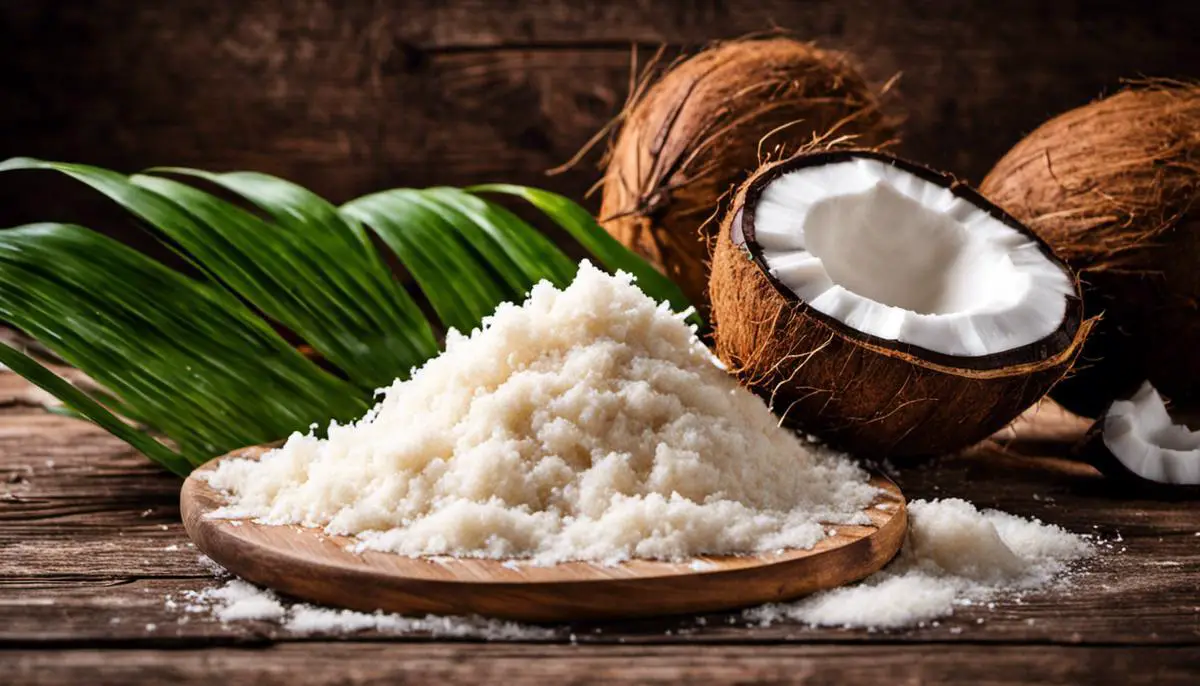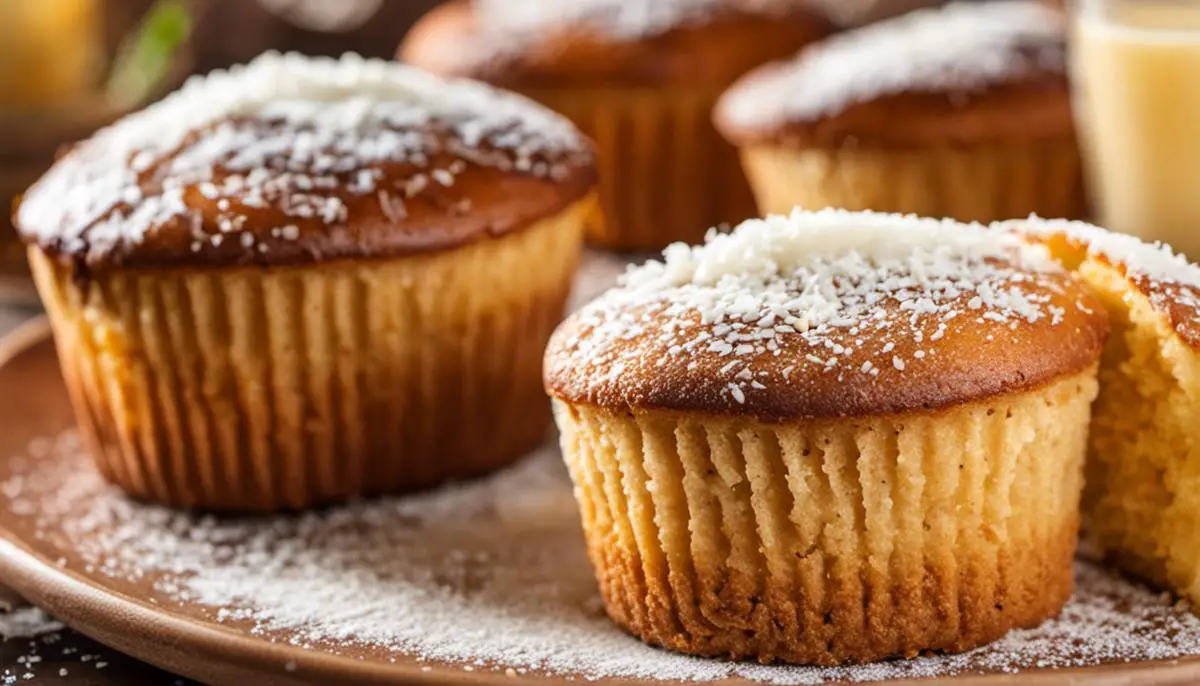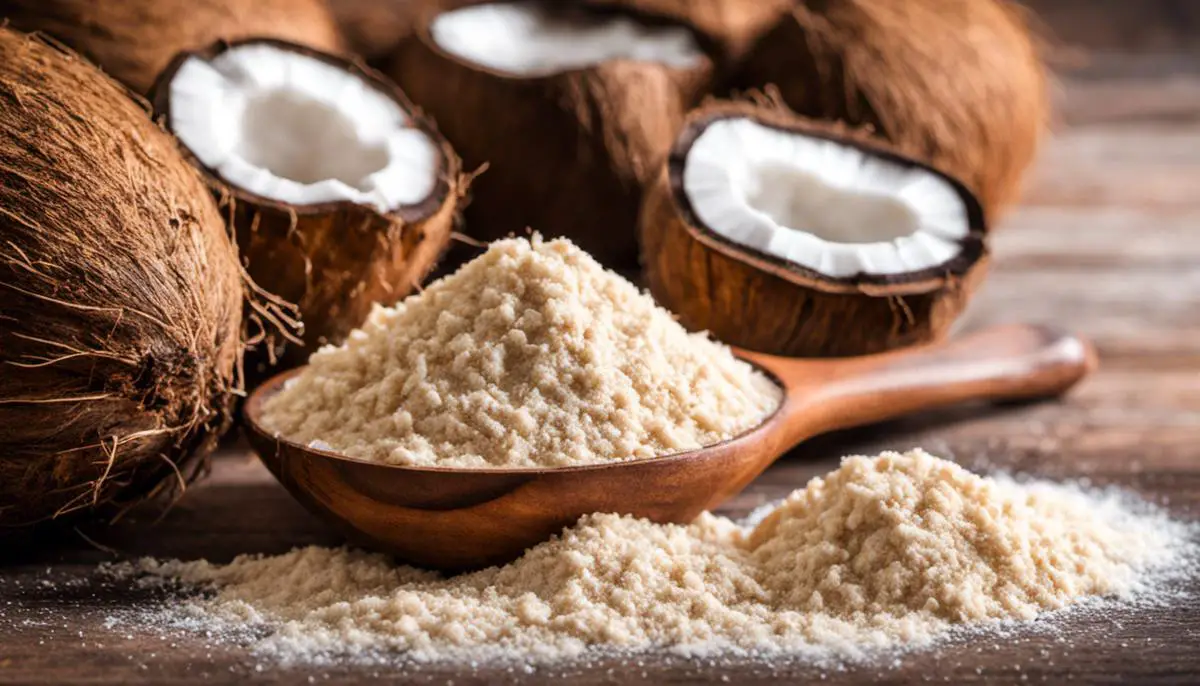Table of Contents
Coconut flour is quickly becoming a staple in baking for its unique properties and health benefits. It’s a seemingly simple ingredient, derived from dried and ground-up coconut meat, but adapting to use it for baking can be a rewarding challenge. Understanding the characteristics and behavior of coconut flour, specifically its moisture-absorbing attributes, offers an exciting new prospect for both amateur and professional bakers. This exploration will take you through the crucial stages of using coconut flour – from understanding its essence, uncovering various recipes, to practically applying it in the baking process.
Understanding Coconut Flour
Understanding Coconut Flour
Coconut flour is a ground down derivative of the endosperm of the coconut, leaving a fine white powder which is commonly used as a gluten-free, low carbohydrate substitute for regular flours. Packed full of fiber, coconut flour works effectively to help your digestive system, making it a favorable ingredient for individuals adhering to a high fiber diet.
Its Key Properties
The most definitive characteristics of coconut flour are its absorbency and its high fiber content. It can absorb a large amount of liquid—almost four times its own weight, making it substantially more absorbent than wheat, almond, or other grain flours. It also contains nearly 60% dietary fiber, much higher than wheat bran or other grain bran flours. Coconut flour’s ability to absorb liquid means batters made with coconut flour require more liquid than those made with traditional wheat flour.
Uses and Benefits in Baking
Coconut flour is paramount in gluten-free, Paleo, or low-carb baking. Due to its unique properties, it cannot be used as a 1:1 substitute for other types of flour. Since it’s highly absorbent, unique adjustments must be made such as increasing the amount of liquid ingredients or eggs to aid in binding and moisture. It is often used in small amounts in recipes or combined with other flours to prevent the finished good from becoming too dense.
Coconut flour imparts a mild coconut flavor to baked goods, but it doesn’t overpower or drastically alter the taste of a recipe. It brings a unique texture to baked goods, making it ideal for items like cookies, brownies, and cake.
Combining Coconut Flour with Other Flours
Given the distinctiveness of its properties, it is common to see recipes that combine coconut flour with other types of flour. This is to achieve a desirable texture in the final product and allow the other flour to make up for the high absorbency of the coconut flour. This is especially prevalent in gluten-free baking where a blend of flours typically yields a more palatable texture and taste. It can be blended with almond flour, cashew flour and even regular wheat flour depending on the dietary restriction and desired result.
Becoming familiar with coconut flour
Understanding its highly absorbent nature and health benefits, and how it interacts with other flours and ingredients, will constitute the first steps towards your baking success with this unique ingredient.

Coconut Flour Baking Recipes
Understanding Coconut Flour Baking
The first step towards coconut flour baking is understanding the characteristics of coconut flour as compared to other flour types. High fiber content and absorbency make coconut flour unique, requiring extra moisture, usually provided by adding more eggs or liquid to the recipe. Additionally, coconut flour can make baked goods more dense, meaning you may need to adjust recipes to achieve the desired texture.
Choosing the Right Recipe
Choose a recipe specifically designed for coconut flour. This is important because coconut flour behaves differently than wheat flour or almond flour. Trying to use coconut flour in the same quantities as other flours can lead to dry, crusty baked goods. There are plenty of delicious recipes available online that are created specifically for coconut flour, encompassing everything from breads to cakes to pancakes.
The Baking Process
In terms of quantities, the general rule is to use one-fourth to one-third of a cup of coconut flour for every cup of wheat or other grain-based flour in the recipe. And remember: coconut flour requires lots of moisture, so add one egg for every ounce of coconut flour, or increase the quantity of other wet ingredients in the recipe.
When it comes to the oven temperature, follow the settings specified in the recipe. The baking time might differ slightly, depending on the type of oven you’re using (standard, convection, etc).
Testing the Finished Product
After baking, check the doneness of the cake or bread by inserting a toothpick in the middle. If it comes out clean, the item is ready. It’s important to allow the baked goods to cool completely, as they might fall apart if you try to cut them while still warm.
Storing Coconut Flour Baked Goods
Coconut flour baked goods can be a bit more crumbly than their wheat-based counterparts. To help keep them intact, store your baked goods in a sealed container. If you’re working with bread or muffins, storing them in the fridge can also help to stiffen them up and prevent them from falling apart.

Practical Baking with Coconut Flour
Understanding Coconut Flour
Coconut flour is a type of flour made from ground and dried coconut meat. It’s renowned for its rich flavor and health benefits, such as high fiber content, low carbohydrate levels, and being gluten-free. Coconut flour absorbs more liquid than other types of flour, which has implications for baking.
Purchasing and Storing Coconut Flour
When purchasing coconut flour, look for a product that has a fine, powdery consistency, reminiscent of wheat flour. It should have a light, coconut scent and a slight beige hue. Once opened, coconut flour should be sealed tightly and stored in a cool, dry place, where it will last for several months. It can also be refrigerated to extend its shelf-life.
Adjustments to Recipes
Because of its high fiber content, coconut flour absorbs a lot more liquid than typical grain-based flours. Consequently, it is often necessary to increase the amount of liquid ingredients in a recipe when substituting with coconut flour. A good rule of thumb is to use around 1/4-1/3 cup of coconut flour in place of 1 cup of wheat flour. Also, for every 1/4 cup of coconut flour used, add one additional egg for structure and moisture.
Baking Bread with Coconut Flour
To bake gluten-free bread using coconut flour, blend together 1/2 cup of coconut flour, 1/2 teaspoon of sea salt, and 1/2 teaspoon of baking soda. In a separate bowl, whisk together six eggs, 1/2 cup of melted coconut oil, and a touch of honey if desired. Mix the dry ingredients into the wet ingredients, then pour the batter into a greased loaf pan. Bake at 350F for 30-35 minutes until the top is lightly browned and a toothpick inserted into the center comes out clean.
Making Pancakes with Coconut Flour
Start by whisking together two tablespoons of coconut flour, 1/2 teaspoon of baking powder, a pinch of salt, and sweetener if you’d like. In a different bowl, combine two eggs, two tablespoons of melted butter, and a splash of vanilla extract — you can also add a little milk to attain a thinner batter. Combine your wet and dry ingredients, stirring until fully mixed. Heat your frying pan over medium heat, adding a dollop of batter once hot. Cook until bubbles appear and the edges solidify, then flip and cook the other side.
Coconut Flour Cookies
To make coconut flour cookies, combine 1 cup of coconut flour with a pinch of salt and 1/2 teaspoon of baking soda. In a separate bowl, mix together 1/2 cup of melted butter, 1/2 cup of honey, and 2 teaspoons of vanilla extract. Gradually add the dry ingredients into the damp ones until a thick dough forms. Scoop the dough onto a lined baking sheet, and press down each ball lightly with a fork. Bake at 350F for about 12-15 minutes, until the edges are golden-brown.
By experimenting and practicing these recipes, you will get a good understanding of the characteristics of coconut flour, and how to adjust regular baking recipes to accommodate this unique flour type.

With time and hands-on experience, anyone can become proficient at coconut flour baking. The process is scientific indeed, centered around understanding its properties and how it interacts with other ingredients, but it’s also an art. An art that requires patience and persistence. As you continue to experiment with different recipes and baking methods, there will be successes and challenges, but the end results will undoubtedly introduce you to a new realm of unique flavors and textures. So, imbue your kitchen with the inviting aroma of coconut, and be ready to embrace a new journey in the diverse culinary world of coconut flour baking.
